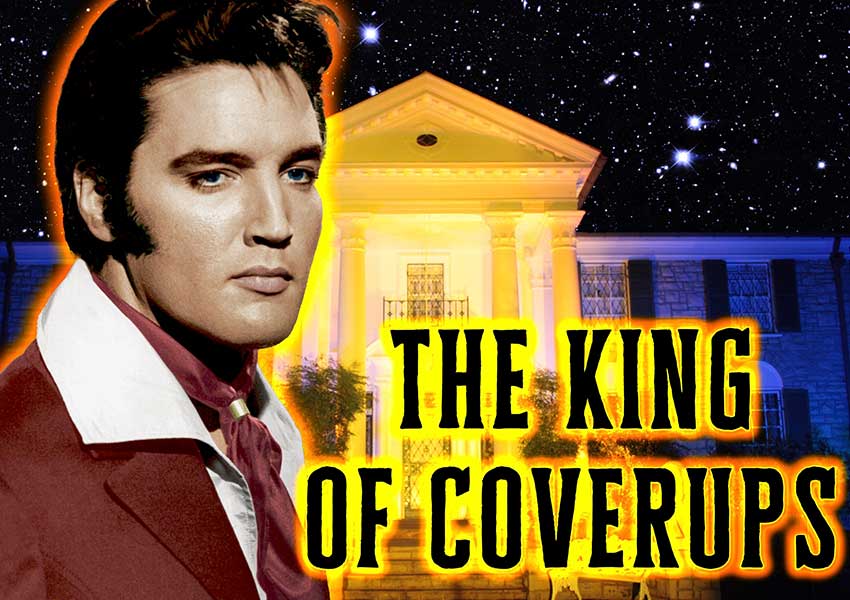Hampton New Hampshire
Tuck Museum Complex
Spirits who were mistreated badly often seek restitution.
Spirits can stick around to enjoy what they lost in their earthly life.
Spirits who loved their peace and comfort place can come back.
DESCRIPTION
 Tuck Museum Complex is a collection of historical buildings from Hampton’s long past that can be explored, including the Fogg’s Homestead Farm House and its buildings, a one room, 1855 school house, a building built by the Seacoast Fireman’s Union, one of the original seaside cabins, from Young’s Cabins; (established in 1938).
Tuck Museum Complex is a collection of historical buildings from Hampton’s long past that can be explored, including the Fogg’s Homestead Farm House and its buildings, a one room, 1855 school house, a building built by the Seacoast Fireman’s Union, one of the original seaside cabins, from Young’s Cabins; (established in 1938).
On the greens in front of the Tuck Museum Complex, the visitor can see the 3 memorials to important people/buildings in Hampton’s history. Also, an unmarked memorial stone placed there by the Tuck Museum, for an infamous person from Hampton’s past, Eunice “Goody” Cole, is also located on the greens of the Tuck Museum.
While the Fogg’s Homestead Farm House and buildings were the original structures built on this land, all the other buildings were saved from the wrecking ball by The Hampton Historical Society, brought to the grounds of The Tuck Museum, renovated and restored, becoming another part of the Tuck Museum Complex.
The Fogg’s Homestead House and buildings serve as both the headquarters of The Hampton Historical Society, and the main part of the Tuck Museum, where various interesting displays from Hampton’s past are seen in exhibits.
The Seacoast Fireman’s Union building has a fascinating display of 18th century fire fighting tools and methods.
The 1955 school house is set up to look like a school of this era.
Leavett Barn was taken apart, and moved to the Tuck Museum Complex, and has agriculture exhibits inside.
The seaside cabin has been restored to its 1938 era decor.
Just across the road from The Tuck Museum Complex, is a large, triangular-shaped grassy park, called Founder’s Park. It’s formal name is Meeting House Green Memorial Park. A large stone representing each founding family of Hampton is found along the boarders of the park. Each large stone has the family name, and the year they came to Hampton/Hampton area.
HISTORY OF MANIFESTATIONS
 People who are mistreated, falsely accused, causing them hardship and unjust punishment, are still restless after they pass on out of this life, wanting some sort of restitution from the living, or want the truth to be made known.
People who are mistreated, falsely accused, causing them hardship and unjust punishment, are still restless after they pass on out of this life, wanting some sort of restitution from the living, or want the truth to be made known.
People who suffer because of the choices they make in life that cause adverse consequences, robbing them of personal happiness, also can become restless in their after-life, hanging around the place on earth where they felt comfortable.
Spirits of people who weren’t buried properly and/or disrespected often can’t rest, and stay in this world, hoping to get their final resting place fixed to their satisfaction. After becoming spirit people, folks denied their homes and/or life style while alive, because of circumstances, stick around in this world to enjoy the things that they lost in their earthly life.
The Fogg Homestead House and buildings are very old, built in the late 1600s. Many farmers and their families have lived in this home over the decades, and some apparently still love the place.
Eunice Cole also fits into all these categories as to why spirits are restless, and stay in this world. Eunice Cole was a 17th century woman who for a variety of reasons was accused of witchcraft, convicted and spent much of the later part of her life in and out of prison. She was the only one convicted and punished in New Hampshire for a conviction in court for being a witch, a popular belief held among her neighbors and community. She lost her freedom, her home, her life with her husband, her farm and her respect, becoming a victim of her own tongue, perhaps her possible dementia, and the prejudices of her community, that refused to forgive her, themselves showing no compassion or patience.
Why?
Eunice looked the part of an old witch – This all happened to a woman in her late 70s.
Eunice acted the part; perhaps part of mental illness or old age issues: Her horrible behavior – Exhibiting characteristics of a witch, who were thought to be by nature to be nasty. It would be an understatement to say that Eunice wasn’t loved by her community, because of her nasty, mean, vindictive streak, and tendency to say horrible things in curses. Eunice was very outspoken with no sense of tact or decorum, not afraid to speak with vile about people she had issues with, showing no mercy or compassion. While Eunice really needed to go to social finishing school, and study chapter 6:3-12 in the book of James, she wasn’t a witch in truth, though her behavior was truly awful. Perhaps she was suffering from the first stages of dementia, and would’ve benefited from modern medicine.
Her social status – Despite being landowners of 40 acres near the large river, Eunice and William Cole were considered lower-class farmers. People referred to her as goodwife Cole; (Eunice “Goody” Cole), a polite term used for a lower class married woman, with no social clout. She didn’t have any friends in high places to speak in her behalf, though I’m not sure this would’ve made a difference.
Possible Sign of divination? – Many found it suspicious that the Coles’ happened to have on their farm property the best water well in the area. Hmmmmmmm. Did she cast a magic spell or two, they must have thought?
One of her curses actually came true; She freely cursed some obnoxious sailors who had stopped and gotten water from their well. They were harassing her, after she objected. She predicted that the sailors wouldn’t return. Because her cursing was heard by witnesses, her tongue got her into serious trouble.
In the days of sailing ships, it wasn’t uncommon for men to perish while out at sea, but she was blamed as being the cause of their death. When their ship coincidentally sank, she was accused of being a witch, and went to prison in her late ’70s; 1657-1660. Eunice was released to care for her sick husband William, but she couldn’t control her tongue, and wound up in prison within a short time. Her husband died in 1662, and Eunice was released soon after, but had no home or farm to come home to, because all was sold to pay for the care of her husband, and for her time spent in “the big house”. Before he died, her husband, William had gone bankrupt paying her jail fine, and the city took over the Coles’ assets, using the money raised from the sale to take care of William and pay for Eunice’s jail time. Eunice once again cursed the townspeople, and wound up back in prison for a few years.
After being released, the townspeople grudgingly built her a small shack, located on the land where the main buildings of Tuck Museum now stands, because they didn’t want to be cursed again, and have to pay for her jail time, out of their own funds, as the Cole money was all gone. In 1672, now in her late eighties, she was accused of turning herself into a dog and an eagle, and influencing a young girl to come and help her. Eunice went to trial, but was found not guilty of this crime, but not cleared of being a witch either. She came home and suffered from more living in solitude, as no one would talk to her, though they fed and housed her out of duty.
When she died in 1680, her body was dragged out, a stake was hammered into her heart, and she was dumped into a hole, and buried in an unmarked grave. Some think that her body was buried in land just across the street, that was renamed “Meeting House Green Memorial Park” on Wednesday, October 14 (Founders Day), 1925. Her shack was torn down, and The Fogg Homestead was built where the shack once stood. Uh oh!
A future, kinder, gentler generation of these townspeople did the right thing; easier to do so when they didn’t know her personally, and social pressure to keep her outside of community life wasn’t there. In 1938, Eunice was exonerated from all witchcraft charges in a public ceremony, restored to full citizenship, and her criminal records were burned. While no one knew where she was buried, a large, unmarked stone that inadvertently looked like an old woman was added to the memorials displayed on the green of the Tuck Museum Complex, who also have dedicated a display, telling Eunice “Goody” Cole’s story, and showing the urn of ashes of the court papers burned in 1938 in one of their museum rooms inside the Fogg Homestead house; Tuck Museum. This urn was supposed to be buried as well, but now it is on display for the whole world to see.
As part of the exoneration, a memorial with her name on it was supposed to be placed near the Cole 1640 stone in Founders Park, but so far, nothing has been done.
MANIFESTATIONS
The Unknown male spirit entity
Grumpy in nature! Perhaps one of the farmers who lived here over the many years this structure was used as a farm home. Didn’t like the paranormal investigators from Northshore Paranormal, and told them to “Get Out!”
Unknown children entities
Possible victims of an epidemic that blew through town. Could be part of a farmer’s family, or perhaps are visiting from the on site school house. Seem to play in the Tuck Museum as well.
Entity of Eunice Cole
First made her presence known, in front of the Fogg family, letting them know she was still there. Perhaps their new farm home was appealing to her. Her shadow and full manifestation was seen around their house and on their grounds. She was blamed for their animals being hard to work with, and for odd things happening around their home.
Eunice Cole still does so today in the same farm house, now home to the Tuck Museum. Her shadow is seen all over the inside of the building. Staff hear footsteps in rooms empty of life. Doors open and close by themselves. The Entity of Eunice Cole has been seen wandering around Founder’s Park.
The entity of Eunice Cole was invited into a home of a young woman, who offered her some water. Eunice was in solid form and looked real. Eunice asked this young woman where the marked grave memorial to Eunice Cole was in Founders Park because she had been looking for it and couldn’t find it. When told that it hadn’t been done yet, the old woman got up and walked through the closed door.
Other spirits have been caught on EVPs.
A crabby male entity was caught in an EVP session in the attic.

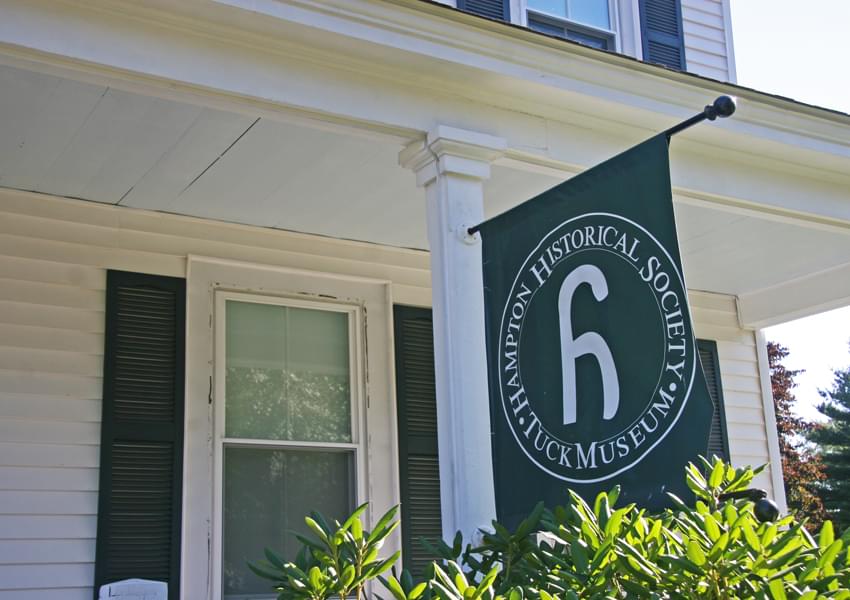
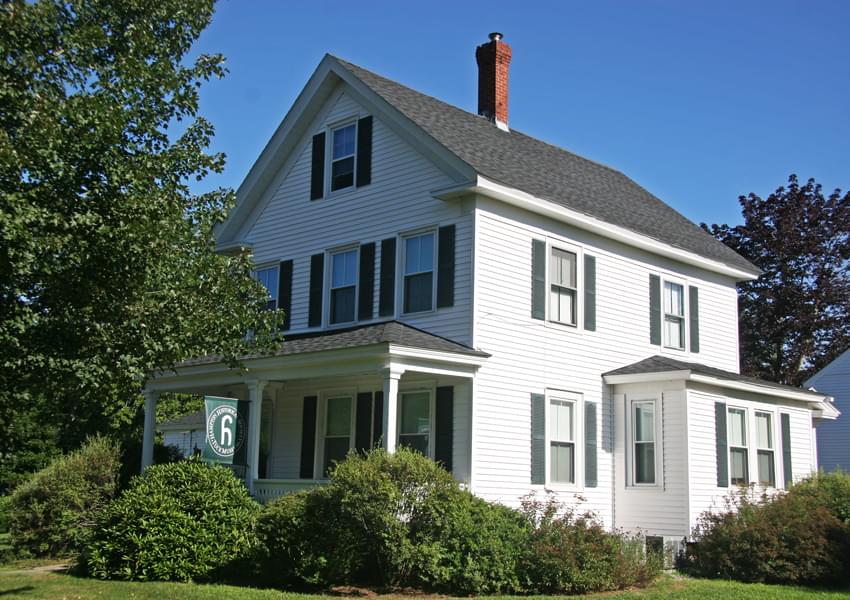
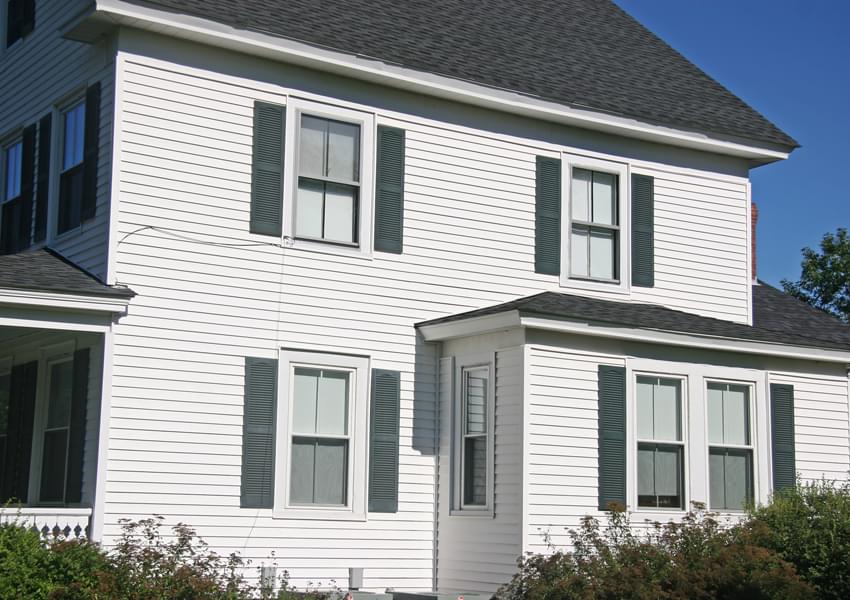


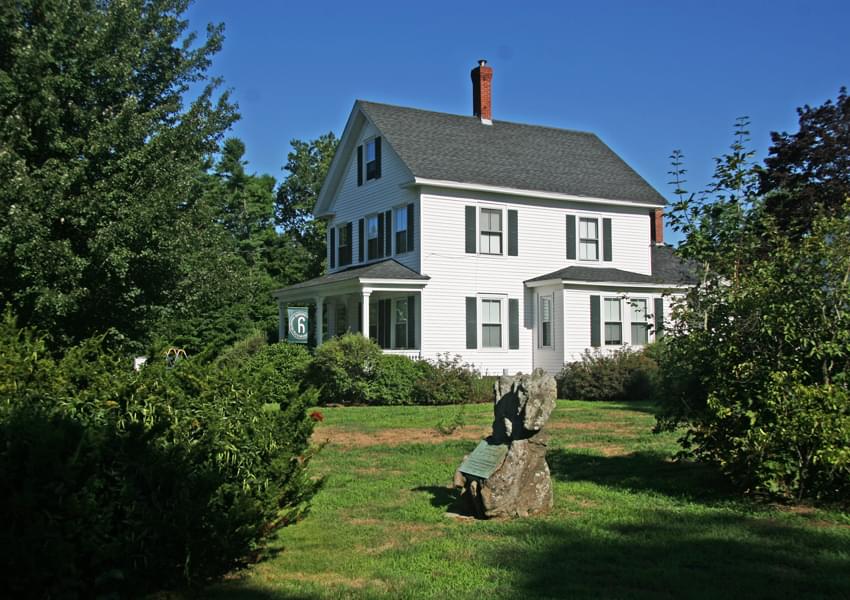

STILL HAUNTED?
A huge Probably so! Several spirits seem to be fond of the Tuck Museum, besides Eunice Cole. North Shore Paranormal investigated the Tuck Museum and picked up some EVPs, suggesting that more than one spirit likes the Tuck Museum.
LOCATION
40 Park Avenue
Hampton, New Hampshire 03842
(603) 929-0781 * info@hamptonhistoricalsociety.org
The Hampton Historical Society (whose main building is the Tuck Museum) is located on Park Avenue, a street off Route 1 (Lafayette Road) in Hampton. Park Avenue is on the northbound side of Route 1, a few blocks south of the intersection of Route 1 and Route 27 (High Street), and one block south of Winnacunnet Road.
SOURCES INCLUDE
- hamptonhistoricalsociety.org/buildng.htm
- “The Hampton Witch” by David V. Craig, from New Hampshire Echoes magazine, Jan/Feb 1973.
- Haunted New Hamphire
by Thomas D’Agostino
Schiffer Books, 2006
Our Haunted Paranormal Stories are Written by Julie Carr
Our Photos are copyrighted by Tom Carr
Visit the memorable… Milwaukee Haunted Hotel


















































































